Top 20 most unique trees, largest trees and oldest trees in the world
Welcome back to Stellar Eureka, where we uncover the marvels of nature and technology. Today, we’re embarking on a magnificent journey to stand in the shadow of giants. Join us as we traverse the globe to unveil the 20 largest trees on Earth.
General Sherman
A giant among giants in California’s Sequoia National Park. This towering tree, a Sequoiadendron giganteum, is not just tall but also voluminous, holding the title of the largest known living single-stem tree on Earth. Its massive trunk, which measures over 36 feet in diameter, and its towering height of 275 feet, make it a living wonder.
General Sherman’s story is as grand as its size. Estimated to be around 2,200 years old, this ancient sentinel of the forest has witnessed centuries of history. Its survival is a testament to nature’s resilience and power. Walking through the Giant Forest, where General Sherman stands, is like stepping into a natural cathedral. The tree’s massive branches, some as thick as small trees themselves, stretch skyward, creating a canopy that dwarfs everything around it.
This tree’s immense size is a culmination of perfect growing conditions in the Sierra Nevada mountain range. The deep, rich soil, coupled with the right balance of moisture and California sunshine, has allowed General Sherman to thrive for millennia. It’s not just a symbol of natural grandeur, but also a reminder of the delicate balance that sustains our planet’s ecosystems.
Visitors from around the world flock to see General Sherman, often awestruck by its sheer scale. It’s a humbling reminder of our place in nature’s grand scheme. But General Sherman is more than just a tourist attraction; it’s a beacon of ecological importance, representing the critical need to protect and preserve our natural world.
Gran Abuelo
In the serene Alerce Costero National Park in Chile, a living legend stands tall. The Gran Abuelo, also known as the Alerce Milenario, is a Patagonian cypress. This ancient giant, estimated to be around 5,484 years old, is now a strong contender for the title of the world’s oldest living tree.
The Gran Abuelo, translating to “Great Grandfather,” is a marvel of the natural world. Its thick, dark trunk, adorned with green shoots and lichen, resembles the pipes of a grand cathedral organ. The tree stands about 100 feet tall, its presence a symbol of the awe-inspiring power of the natural world.
The discovery of the Gran Abuelo’s age is a story of innovation and respect for nature. Chilean environmental scientist Jonathan Barichivich, along with dendrochronologist Antonio Lara (a scientist who studies the rings that appear each year in tree trunks), took a core sample from the tree in 2020. They were able to reach only 40% into the tree, as its center is likely rotten, making a complete core unattainable. Yet, this sample revealed about 2,400 growth rings. Barichivich then used statistical modeling, informed by known growth rates of the species, to estimate the tree’s age, leading to the astonishing figure of 5,484 years.
In the shadow of the Gran Abuelo, one can’t help but feel a connection to something greater. This ancient Patagonian cypress, reaching towards the sky, is a testament to the wonders that lie hidden in our natural world, waiting to be discovered and revered. The Gran Abuelo, standing tall and proud, is not just a marvel of nature but a symbol of the enduring beauty and resilience of the natural world.

Boab Prison Tree
In the remote landscapes of Derby, Western Australia, stands a remarkable and ancient Boab tree, known as the Boab Prison Tree. This 1,500-year-old tree, with a massive girth of 14.7 meters, is not just a botanical wonder but a symbol of the complex and often misunderstood history of the region.
The Boab Prison Tree has long been reputed to have been used as a lockup for Indigenous Australian prisoners in the 1890s on their way to Derby for sentencing. However, recent research and historical evidence suggest that this story is more myth than reality. The tree’s actual use by Indigenous Australians was far more benign and culturally significant, often serving as a shelter or a ceremonial site.
In the Nyulnyulan languages of the Western Kimberley, boab trees are called ‘larrgadiy’ and hold considerable mythological significance. These ancient trees are often regarded as cherished individuals with unique personalities, deeply intertwined with the cultural and spiritual practices of the local Indigenous communities.
The tree’s hollow trunk, documented by anthropologist Herbert Basedow in 1916, was described as a dry and comfortable hut, used by Aboriginal people with respectful and practical use of the tree, far removed from the later prison myth.
Today, the Boab Prison Tree is a popular tourist attraction, protected under the Aboriginal Heritage Act 1972. A fence has been erected around the tree to protect it from damage due to human traffic and to preserve the surrounding soil from compaction by vehicles.

Hyperion
We go back to the United States for our next undisputed silent giant. Hyperion, the world’s tallest tree, is a marvel of nature’s grandeur. Discovered in 2006 in California’s Redwood National Park, this coast redwood stretches an astonishing 380 feet into the sky making it a true giant among giants in the natural world.
Hyperion’s discovery was a moment of awe. Naturalists Chris Atkins and Michael Taylor stumbled upon this colossal being, hidden in the dense foliage. Its towering presence, estimated to be between 600 to 800 years old, speaks of centuries of growth, undisturbed by the hustle of the world below.
The journey to Hyperion is a pilgrimage through the heart of ancient forests. The path, shrouded in secrecy to protect its delicate ecosystem, is a testament to our enduring fascination with the natural world. In 2022, the area around Hyperion was closed to preserve its unique habitat, a reminder of the delicate balance between human curiosity and nature’s sanctity.
Getting a real glimpse of Hyperion isn’t easy; most pictures and videos you see online aren’t accurate. In fact, there’s very little true footage out there. To give you an idea of what it takes to capture the full majesty of the world’s tallest tree, imagine this: a team with three cameras, a robotic dolly, and a gyroscope had to stitch together 83 different photos. That’s the kind of effort needed to show off Hyperion in all its glory.
This giant, containing over 550 million leaves, is not just a tree; it’s a symbol of the awe-inspiring power of nature.
Centurion
In the lush wilderness of Southern Tasmania, Australia, stands a towering marvel of nature, the Centurion. This Eucalyptus regnans, soaring to an awe-inspiring height of 330 feet, is not just a tree but a symbol of the awe-inspiring power of the natural world. First measured at 326 feet in 2008, it was subsequently re-measured to its current height by ground laser in 2018, placing this Eucalyptus regnans as the fourth-tallest tree species in the world.
The Centurion, named fittingly for its stature and coinciding with its height, echoing the Latin word ‘centum’ for ‘one hundred’, is a survivor. It stands in a small patch of very old forest surrounded by secondary forest, having survived logging and forest fires by coincidence. In 2019, it was damaged by a bushfire that devastated the surrounding area but appears to have initially survived, with a new hollow in the base created by the fire.
The journey to the Centurion is a pilgrimage of sorts, a trek into the heart of Tasmania’s untamed beauty. About one and a half hours south of Hobart, the path to this giant is a tapestry of rugged landscapes and untamed wilderness.
This majestic tree is a testament to the resilience and strength of nature. The Centurion’s diameter is 4.05 meters, its girth exceeds 12 meters, and its volume has been estimated at 268 cubic meters. It is alternately known as “the Bradman” as the height of the tree at 99.82 meters was close to the Test run average of the Australian cricketer Donald Bradman.
The President
We fly back to the United States for our next tree. In the heart of California’s Sequoia National Park, a living monument stands tall. The President, a giant sequoia, is not just a tree but a symbol of natural grandeur and history. At over 3,200 years old, this colossal being stretches up to 247 feet into the sky.
The President, named in honor of Warren G. Harding, the 29th President of the United States, is a marvel of the natural world. Its age and size make it one of the most significant trees on Earth. Its trunk holds approximately 54,000 cubic feet, equivalent to the combined volume of 55 school buses, with an additional 9,000 cubic feet spread across its branches, it’s a giant in every sense of the word.
Capturing the essence of The President is no small feat. National Geographic undertook the challenge, creating a stunning mosaic of 126 photographs to showcase its full length. This extraordinary effort highlights the tree’s immense size and the intricate beauty of its structure, from the deep grooves of its bark to the sprawling reach of its branches.
The President’s dense crown, filled with over two billion leaves, is a bustling ecosystem in itself. It’s a world teeming with life, from the tiny insects that call it home to the birds that dance among its branches. This tree is a living reminder of the complex web of life that thrives in these ancient forests.
Methuselah
In the Ancient Bristlecone Pine Forest of California’s White Mountains, a remarkable tree named Methuselah stands as a testament to the resilience and longevity of nature. This Great Basin bristlecone pine is not just any tree; it’s one of the oldest known non-clonal living organisms on Earth, with an estimated age of 4,853 years.
Methuselah’s story is one of survival against the odds. It grows at elevations between 2,900 and 3,000 meters, in an environment that would be hostile to most life forms. The secret to its longevity lies in its ability to thrive in the harsh, arid conditions of the high mountains, drawing sustenance from the limestone and carbonate rock soils.
The tree’s gnarled, twisted branches, shaped by the relentless mountain winds, are more than just a unique feature; they provide stability and reduce the risk of breakage during storms. Methuselah’s roots have a unique adaptation too, nourishing only the specific section of branches directly above, ensuring that if a root dies, only the corresponding segment of the tree is affected.
Methuselah’s age was first estimated in 1957 by Edmund Schulman and Tom Harlan, using dendrochronology, the scientific method of dating tree rings. This method revealed that Methuselah was more than 4,600 years old at the time, making it older than the giant sequoias previously thought to be the longest-living trees.
The exact location of Methuselah is a closely guarded secret, protected to prevent damage from overenthusiastic tourists. This mystery adds to the tree’s allure, making it a symbol of the untamed beauty and enduring strength of nature.
Methuselah is not just an ancient tree; it’s a living record of our planet’s history. Each ring in its trunk holds data about the climate of the year it grew, providing scientists with invaluable information about past temperature fluctuations, precipitation variability, and even large volcanic eruptions.
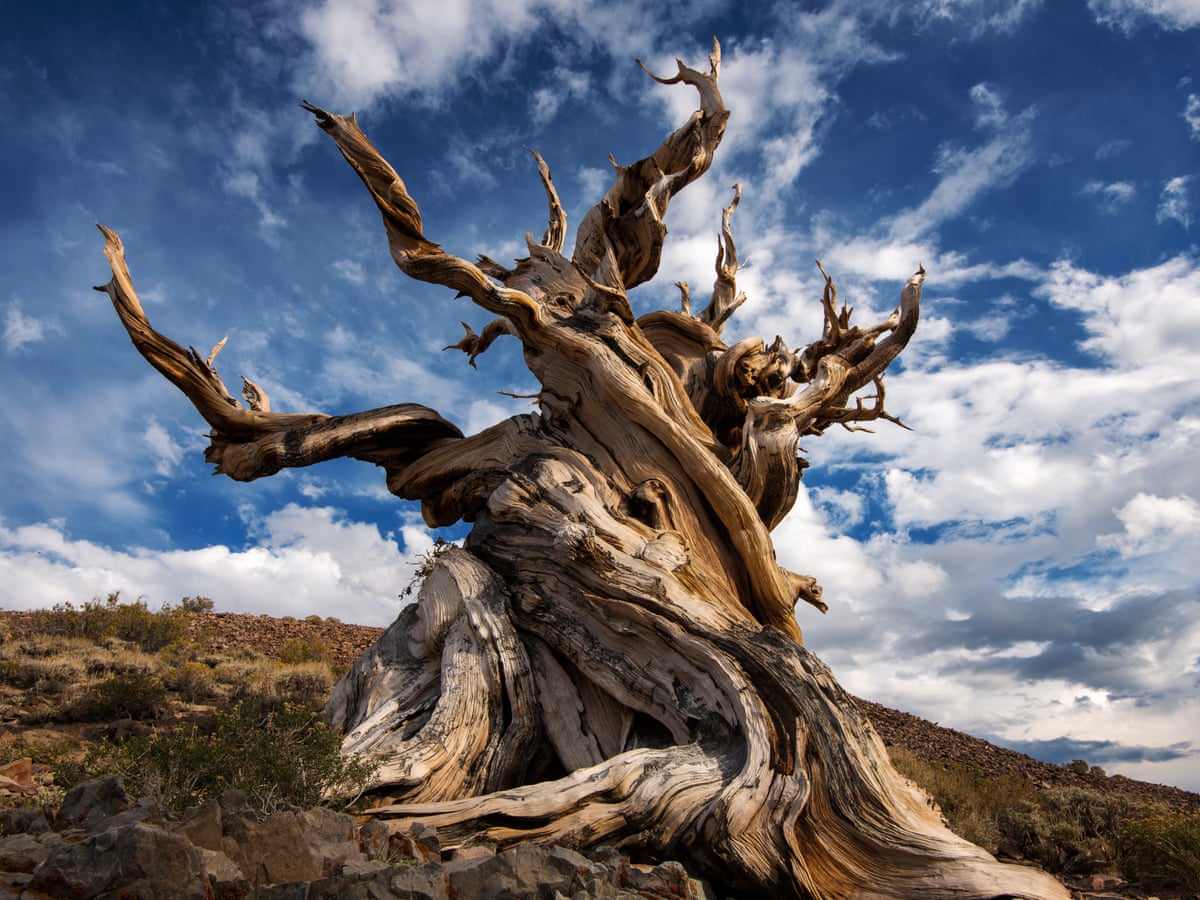
Pando
In the serene Fishlake National Forest of Utah, a unique and colossal organism known as Pando, the “Trembling Giant,” stretches its roots and branches. This quaking aspen is not just a tree but a clonal colony that forms one of the largest living organisms on Earth. Covering approximately 106 acres and weighing over 6,600 tons, Pando is a botanical marvel, consisting of around 47,000 genetically identical stems, all connected to a single massive root system.
Pando, which translates to “I spread” in Latin, is a testament to nature’s incredible ability to adapt and thrive. This aspen clone has survived for thousands of years, with some estimates dating its roots back to the end of the last ice age, around 25,000 years ago. Its vast network of roots tunnels beneath the landscape, including under Utah State Route 25, which runs through the heart of Pando.
Its discovery and identification as a single organism in 1976 by scientists Burton Barnes and Jerry Kemperman marked a significant moment in our understanding of clonal plant life. The clone’s exact age remains uncertain, with estimates ranging from a few thousand years to as old as 80,000 years. However, the consensus is that Pando is likely just a few thousand years old.
Despite its grandeur, Pando faces threats to its survival. Grazing by mule deer and cattle, coupled with changes in the ecosystem, have hindered the regeneration of new stems. The lack of young trees replacing the older dying ones poses a significant risk to Pando’s long-term health. Conservation efforts, including fencing off portions of the clone to protect it from grazing, are underway, but the challenges of managing such a vast and unique organism remain.
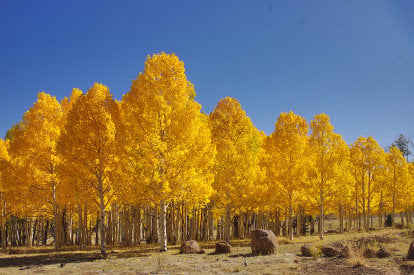
Mother of the Forest
In the mid-19th century, nestled in the Calaveras Grove of California, stood a majestic giant sequoia known as the Mother of the Forest. This towering tree, discovered in 1852 by Augustus T. Dowd, was a symbol of the awe-inspiring beauty and grandeur of nature. Standing at 328 feet tall with a circumference of 93 feet, it was the second largest tree in the grove.
The Mother of the Forest’s story is one of both wonder and tragedy. During the California Gold Rush, its bark was harvested and exhibited in New York and London, captivating audiences with its immense size. However, this act of exploitation ultimately led to the tree’s demise. Stripped of its protective bark, the tree was left vulnerable and was eventually destroyed by fire in 1908, leaving behind only a fire-blackened snag as a solemn reminder of its once grand presence.
The felling and exhibition of the Mother of the Forest sparked a public outcry and a growing awareness of the need to conserve these natural wonders. This led to the birth of the conservation movement and the legal protection of giant sequoias. In 1931, the Calaveras Grove, including the site of the Mother of the Forest, was designated as part of California State Parks, ensuring the preservation of these remarkable trees for future generations.
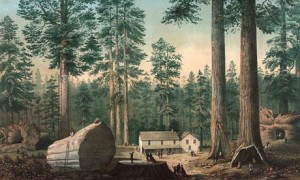
Jomon Sugi
Nestled on the mystical island of Yakushima, a UNESCO World Heritage Site in Japan, stands the Jomon Sugi, a majestic Cryptomeria tree that is a living testament to the resilience and grandeur of nature. This ancient tree, estimated to be between 2,170 and 7,200 years old, is not just a tree but a symbol of the awe-inspiring power of the natural world.
The Jomon Sugi, named after the Jomon period of Japanese prehistory, is the oldest and largest among the old-growth cryptomeria trees on Yakushima. It stands 83 feet high and boasts a circumference of 16.4 meters. The tree’s immense age and size make it a significant natural wonder and a key attraction on the island.
The discovery of Jomon Sugi in 1966 sparked efforts to protect the forests of Yakushima, ultimately leading to the island’s designation as a UNESCO World Heritage site in 1993. This recognition has helped preserve the unique ecosystem of Yakushima, which is home to many other ancient trees and diverse wildlife.
In response to Yakushima’s World Heritage designation and the increased number of visitors, access to the tree has been restricted to an observation deck built 15 meters from its base. This measure is designed to protect the tree’s roots and preserve its natural environment.
Lost Monarch
We find ourselves in California, again, in the hidden depths of Jedediah Smith Redwoods State Park, where a natural wonder stands tall and proud. The Lost Monarch, a majestic coast redwood, discovered in 1998, is a colossal tree, with a diameter of 26 feet and towering at 321 feet, is the world’s fifth-largest coast redwood in terms of wood volume.
The Lost Monarch is a hidden gem, its exact location kept secret to protect its delicate ecosystem. This giant, estimated to contain 34,914 cubic feet of wood volume, stands among other titans in the Grove of Titans, a congregation of some of the largest redwoods known to man.
Capturing the essence of the Lost Monarch is a challenge, akin to capturing a legend. Its immense size and intricate structure, from the deep grooves of its bark to the sprawling reach of its branches, are a testament to the centuries of growth and survival. The tree’s dense crown, filled with over a billion leaves, is a bustling ecosystem in itself, a world teeming with life.
Major Oak
In the heart of Sherwood Forest, Nottinghamshire, England, stands the Major Oak, a legendary English oak that is not just a tree but a living symbol of history and folklore. This ancient giant, estimated to be around 800 to 1,000 years old, is renowned for its massive size and its connection to the tales of Robin Hood and his merry men.
The Major Oak is a remarkable specimen, with a girth of 33 feet and a canopy spanning 92 feet. It weighs an estimated 23 tons, making it one of the most massive oaks in the United Kingdom. In 2014, it was voted ‘England’s Tree of the Year’ in a public poll by the Woodland Trust, a testament to its cultural and historical significance.
The tree’s unique shape and size have sparked several theories about its growth. One popular belief is that the Major Oak may be several trees that fused together as saplings, or it could have been pollarded, a tree management practice that causes the trunk to grow large and thick. However, there is limited evidence to support these theories.
The Major Oak has been a part of Sherwood Forest’s landscape for centuries, and its age and expansive canopy can be attributed to its fortunate location in a clearing, which became a protected Royal hunting estate after the Norman Conquest in 1066. The tree’s slow growth on impoverished soil may have contributed to its longevity.
To protect the Major Oak from damage due to its popularity, the tree has been fenced off for almost 50 years. It has also been supported by chains, steel bands, and a metal framework to help sustain its heavy branches and expansive canopy.
El Arbol del Tule
In the charming town of Santa María del Tule in Oaxaca, Mexico, stands a natural wonder that has captivated the hearts and imaginations of locals and travelers alike. El Árbol del Tule, a massive Montezuma cypress. This majestic giant, with its colossal trunk and storied history, is a symbol of the profound connection between nature and culture.
El Árbol del Tule is renowned for its remarkable age and its colossal trunk, which boasts one of the largest circumferences in the world. The tree’s trunk has a circumference of almost 145 feet and stands over 130 feet tall, with its crown spreading out to a circumference of 190 feet. It would take about 30 people holding hands to fully encircle the trunk. The tree weighs a staggering 636 tons, making it one of the most massive trees on the planet—equivalent to the total weight of over 100 adult elephants.
The age of El Árbol del Tule is a subject of fascination, with estimates placing it between 1,400 and 3,000 years old, making it one of the oldest living trees in the world. The tree’s trunk is adorned with various shapes, such as an elephant, a lion’s head, a crocodile, and more, adding to its allure and making it a popular attraction for visitors.
The legends surrounding El Árbol del Tule are as captivating as the tree itself. For the Zapotec indigenous populations, Tule means ‘Tree of Illumination’ or ‘old water.’ According to their oral legends, they believed that humans originated from trees and celebrated a ritual known as the Mixtec dance of the cypress, offering offerings and ceremonies to the cypresses. The tree is said to have been planted 1,400 years ago by Pechocha, a priest of Ehécatl, the god of the wind.
El Árbol del Tule is a revered symbol in the community. Every year on the second Monday of October, the residents of Santa María del Tule celebrate Árbol del Tule Day with a traditional festival featuring live music, fireworks, delicious cuisine, dances, and much more.
In 2003, it was declared a Worl d Heritage Site by UNESCO, recognizing its significance as the largest ahuehuete in Mexico and its majestic view, legendary tales, and grandiose size.
This tree is not just a marvel of nature; it’s a beacon of cultural heritage and a reminder of the importance of preserving our natural wonders.

Old Tjikko
Perched high atop Sweden’s Fulufjället Mountain, Old Tjikko, a Norway Spruce, showcases the remarkable resilience and enduring legacy of the natural environment. This seemingly modest tree, estimated to be 9,550 years old, is recognized as the world’s oldest known clonal tree, a remarkable survivor from a time long past.
Old Tjikko began its life shortly after the glaciers receded from Scandinavia at the close of the last ice age. Its survival through millennia, including significant climatic shifts and human developments, is a story of adaptation and endurance. The tree spent many years in a stunted shrub formation due to the harsh tundra environment, only growing into its current tree form as the climate warmed in the 20th century.
The age of Old Tjikko was determined through carbon dating of its root system, revealing the tree’s true age and clonal nature. While the visible trunk is relatively young, the tree is part of an older root system that has regenerated new trunks over thousands of years. This process of vegetative cloning, where a new trunk sprouts from an ancient root system, has allowed Old Tjikko to survive for nearly ten millennia.
Old Tjikko’s discovery by Leif Kullman and Lisa Öberg, and its subsequent naming after Kullman’s late dog, has added a personal touch to the tree’s scientific significance. The tree has become a symbol of the ancient natural world, standing as a silent witness to the passage of time.
Located in Fulufjället National Park, Old Tjikko is accessible to visitors, though its exact location is not widely publicized to protect the tree. The park offers guided tours to the tree, emphasizing the importance of preserving this unique natural wonder.
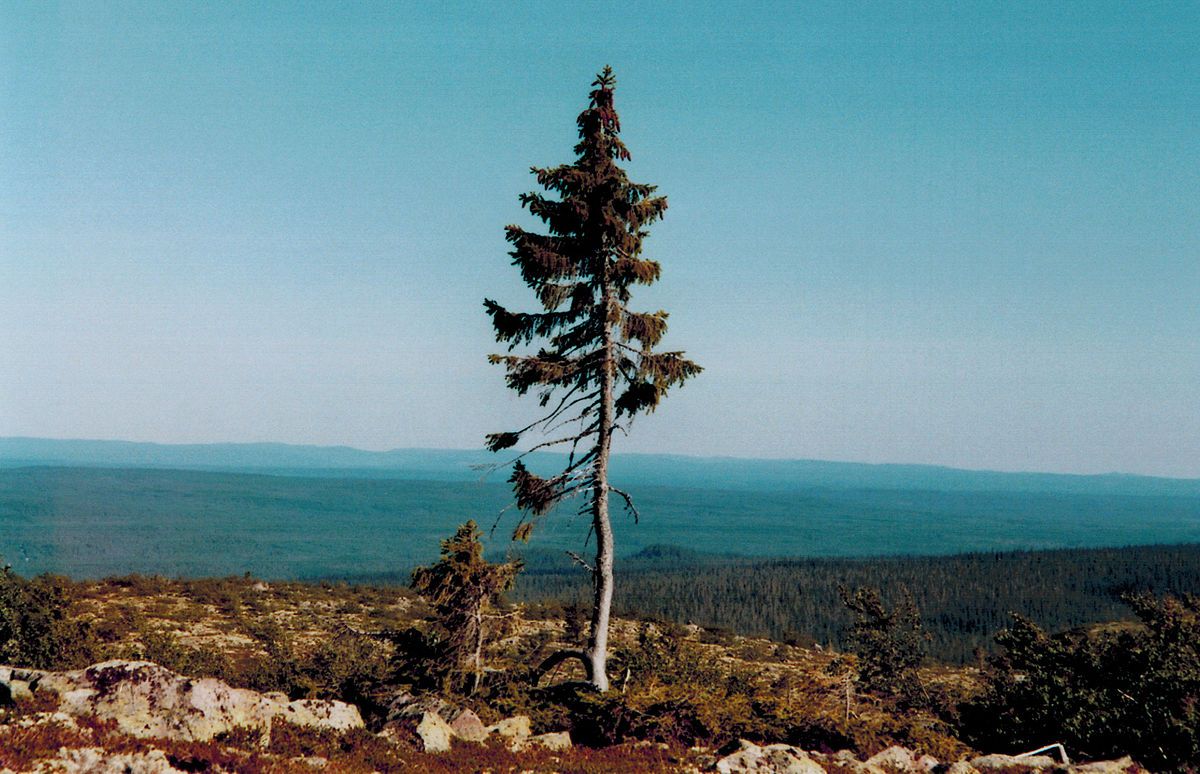
Thimmamma Marrimanu
In the arid region of Anantapur, Andhra Pradesh, India, lies a natural marvel that has stood the test of time and nature. Thimmamma Marrimanu, a sprawling banyan tree, is not just a tree but a symbol of life, resilience, and continuity. With its canopy covering an astonishing 4.721 acres, it was recorded as the largest tree specimen in the world in the Guinness Book of World Records in 1989.
Thimmamma Marrimanu, which translates to “Thimmamma’s Banyan Tree” in Telugu, is named after a local myth. According to legend, the tree originated from one of the poles used in the funeral pyre of Thimmamma, a woman who committed sati (unalive on her husband’s funeral pyre). This act of devotion is believed to have given birth to the tree, which is now revered by the local community.
The tree holds a significant place in the hearts of the people of Dharmic religions, including Hinduism, Buddhism, Jainism, and Sikhism. Beneath its vast canopy lies a small temple dedicated to Thimmamma, where childless couples come to worship, believing that they will be blessed with a child in the following year. The tree becomes a focal point of celebration during the Shivaratri festival, drawing thousands of devotees.
Thimmamma Marrimanu’s immense size and age are a testament to the banyan tree’s unique ability to spread through its roots. The tree’s roots grow outward, forming additional trunks and thus expanding the tree’s reach. This natural process has allowed Thimmamma Marrimanu to grow into the massive tree it is today.
Hundred Horse Chestnut
Nestled on the eastern slopes of Mount Etna in Sicily, the Hundred Horse Chestnut (Italian: Castagno dei Cento Cavalli) stands as a living monument to the enduring strength and beauty of nature. This sweet chestnut tree (Castanea sativa) is not just any tree; it’s the largest and oldest known chestnut tree in the world, believed to be between 2,000 to 4,000 years old.
The Hundred Horse Chestnut’s name is steeped in legend. According to a popular story, a queen of Aragon and her company of 100 knights, during a trip to Mount Etna, were caught in a severe thunderstorm and took shelter under the tree. This historical event has immortalized the tree in local folklore and culture.
The tree’s immense size is a marvel in itself. It was listed in the Guinness World Records for the record of “Greatest Tree Girth Ever,” with a circumference of 190 feet when measured in 1780. Although the tree has since split into multiple large trunks, these trunks still share the same roots, illustrating the unyielding resilience and ageless vitality of nature.
The Hundred Horse Chestnut is not just a natural wonder; it’s a symbol of Sicilian heritage and history. The tree has been a subject of various songs and poems, capturing the imagination of many. Its presence near the active Mount Etna volcano adds to its mystique, having survived countless eruptions and the passage of time.
Today, the tree continues to thrive, drawing visitors from around the world. The road that once passed through the tree has been closed, and a fence protects its ancient roots from excessive foot traffic. However, for a few hours each day, the gates are opened, allowing visitors to experience the majesty of the world’s largest chestnut tree up close.

Patriarca da Floresta
In the serene Vassununga State Park in São Paulo, Brazil, stands a majestic jequitibá-rosa tree known as “O Patriarca” (The Patriarch). This towering tree, estimated to be around 600 years old, is not just a botanical wonder but also embodies the enduring strength and lasting presence of the natural world. With a diameter of 12 feet, a height of 130 feet, and a circumference of 38 feet, O Patriarca is a testament to the ancient and enduring strength of the natural world.
O Patriarca’s name reflects its status as one of the oldest and most imposing trees in Brazil. The tree’s age was estimated based on comparison to a neighboring jequitibá whose rings were counted and whose trunk was studied using carbon 14 dating. O Patriarca’s larger and thicker trunk led to the estimation of its age at 600 years, making it a significant natural wonder in the region.
The tree holds a special place in the hearts of the local community and visitors alike. Its presence in the well-preserved cerrado of the 2,200 acres Pé de Gigante section of Vassununga State Park makes it a key attraction. The park, which protects an area of Atlantic semi-deciduous forest and cerrado forest, is home to about 330 specimens of this rare and imposing tree species.

The Sunland Baobab
In the heart of Limpopo, South Africa, stood the Sunland Baobab, a colossal baobab tree known for its remarkable size and age. This tree, estimated to be around 1,060 years old, was not just a botanical wonder but a symbol of the enduring strength and beauty of nature. With a height of 72 feet and a diam eter of 34.9 feet, the Sunland Baobab was one of the largest baobabs in South Africa and the widest on the continent.
The Sunland Baobab was famous for its hollow interior, which naturally hollowed out after 1,000 years. This unique feature led to the creation of a small pub inside the space by the van Heerden family, who owned the land. The rustic bar, with 13-foot high ceilings, could comfortably fit 15 people and even hosted a party with 40 full-size adults. The tree’s hollow also housed a wine cellar, which remained at a constant temperature thanks to the tree’s natural vents.
However, the Sunland Baobab’s long life came to a significant change in 2016 when a third of the tree’s trunk split and collapsed, likely due to its age. This event marked the end of the tree’s use as a bar. The collapse was part of a larger phenomenon observed in African baobabs, where many of the oldest and largest trees have died over the past years.
Despite the loss of part of its trunk, the Sunland Baobab remained a symbol of nature’s ability to persist . Baobabs are known for their ability to regenerate, and the remaining parts of the Sunland Baobab continued to live on. The tree’s age and size made it a significant natural wonder, comparable to California’s legendary sequoias.
General Grant Tree
In the majestic Grant Grove of Kings Canyon National Park in California stands the General Grant Tree, a giant sequoia that is not just a tree but a living symbol of natural grandeur and history. This towering giant is estimated to be around 1,650 years old, making it a significant natural wonder and a key attraction in the park.
The General Grant Tree was named in 1867 in honor of Ulysses S. Grant, Union Army general and the 18th President of the United States. Its immense size and stature led President Calvin Coolidge to proclaim it the “Nation’s Christmas Tree” in 1926. The tree’s base measures 107.6 feet in circumference, and it stands 267.4 feet tall.
In 1956, President Dwight D. Eisenhower declared the General Grant Tree a “National Shrine,” a memorial to those who perished in war, making it the only living object to be so designated. This declaration reflects the tree’s significance not just as a natural wonder but also as a symbol of national heritage and remembrance.
Visitors to the General Grant Tree can explore a 1/3-mile paved loop trail that leads to the tree, offering a chance to experience the awe-inspiring presence of this ancient giant. The trail also includes other named trees and features, such as the Gamlin Cabin and the Fallen Monarch, enhancing the visitor’s experience in the grove.
The General Grant Tree has inspired thousands of people over the years. Its designation as the Nation’s Christmas Tree has led to annual Christmas programs held at the tree, a tradition that continues to bring people together to celebrate the spirit of the season in the presence of this magnificent tree.
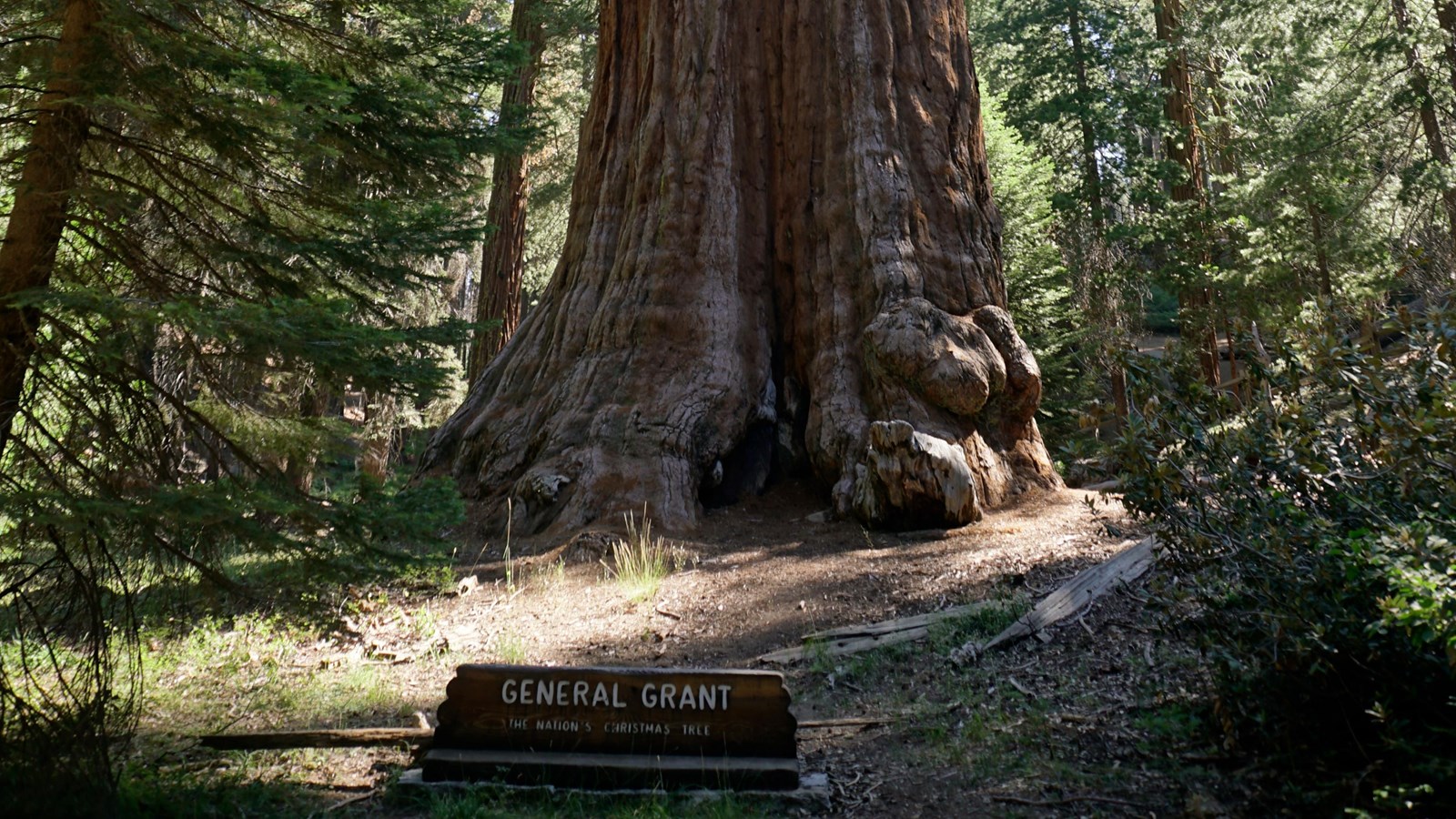
Helios
We stay in the US for our last tree. In the lush expanse of Redwood National Park in California, a towering giant named Helios stands as a testament to the grandeur of nature. This coast redwood, reaching a staggering height of 377.13 feet, is not just a tree but a symbol of the awe-inspiring power and resilience of the natural world. Helios, the world’s second-tallest tree, is a remarkable survivor and a key figure in the park’s ecosystem.
Helios was discovered on July 1, 2006, by naturalists Chris Atkins and Michael Taylor. They named the tree after the Greek Titan Helios, god of the sun, because its treetop remained sunlit when first spotted near sunset. The tree briefly held the title of the world’s tallest tree until the discovery of Hyperion.
The tree’s immense size and age are a testament to the unique ability of coast redwoods to grow to such monumental heights. Helios has the largest measured crown in Redwood National Park, containing over 560 million leaves. The main trunk tapers sharply about 59 feet above average ground level, and the tallest leader is a reiterated trunk.
Sagole Baobab
In the heart of South Africa’s Venda land, stands a living monument so colossal, it’s revered as a natural wonder. The Sagole Baobab, often hailed as the largest baobab in the world, stretches its ancient branches towards the sky, a testament to the enduring power of nature. This majestic tree, with its gargantuan trunk and sprawling canopy, is not just a sight to behold but a keeper of centuries-old secrets.
The Sagole Baobab’s girth is so wide, it takes a small crowd with outstretched arms to embrace its circumference. Its hollow trunk, large enough to shelter a small group, whispers tales of community gatherings, echoing the cultural significance it holds for the local people. This tree is not merely a plant; it’s a living, breathing entity that has provided shade, shelter, and sustenance to countless generations.
Venturing to this remote part of Limpopo province, visitors are greeted by a sight that seems to straddle the line between reality and myth. The baobab’s bark, resembling the wrinkled visage of the earth itself, tells a story of resilience and survival. It’s a tree that has witnessed the ebb and flow of time, surviving in an environment that tests the limits of life.
Among the many marvels of the Sagole Baobab is its ability to store thousands of liters of water in its trunk, a vital adaptation to the arid conditions of its habitat. This natural reservoir sustains the tree during droughts, making it a symbol of life and endurance in the harsh African landscape.
But the Sagole Baobab is more than just an ecological marvel. It’s a beacon for biodiversity, supporting a myriad of life forms. From the tiny insects that dance in its crevices to the birds that serenade from its branches, the tree is a bustling metropolis of nature’s finest.
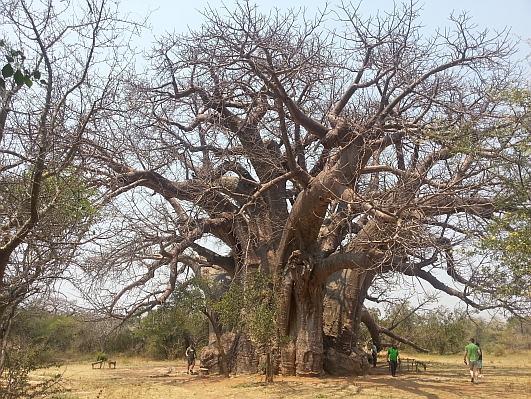
Conclusion
As we continue to explore the remarkable inhabitants of our planet, remember that each tree, like each of us, has its own unique story to tell. Which of these remarkable trees has left a lasting impression on you? Let us know in the comments below.